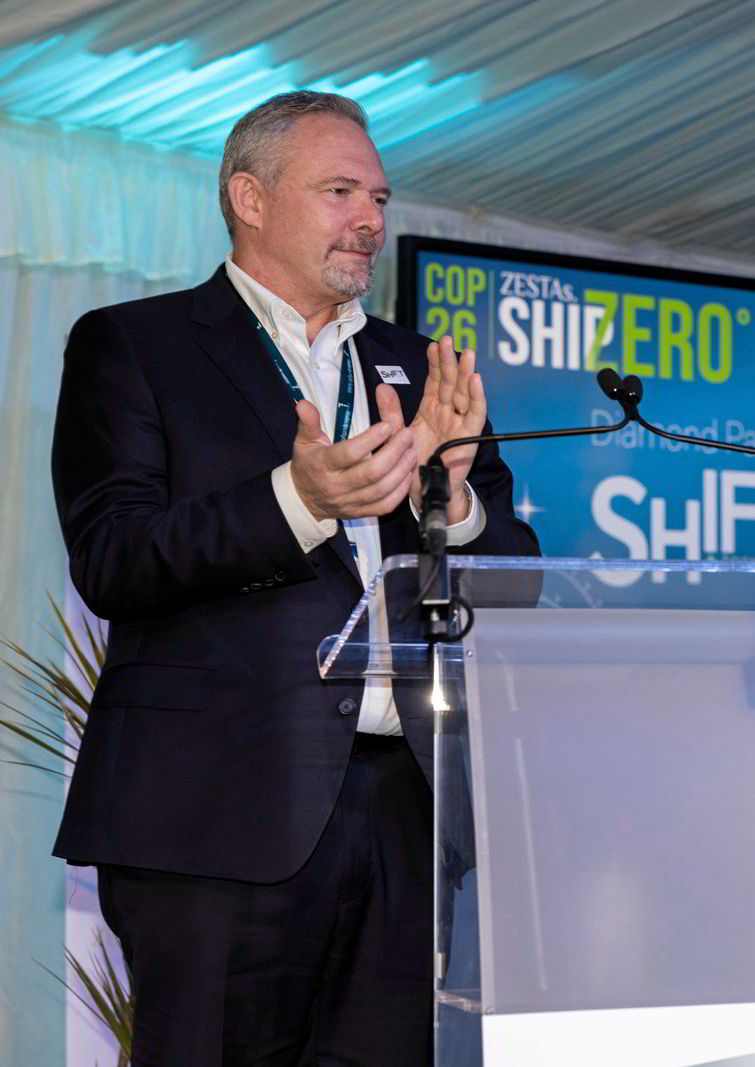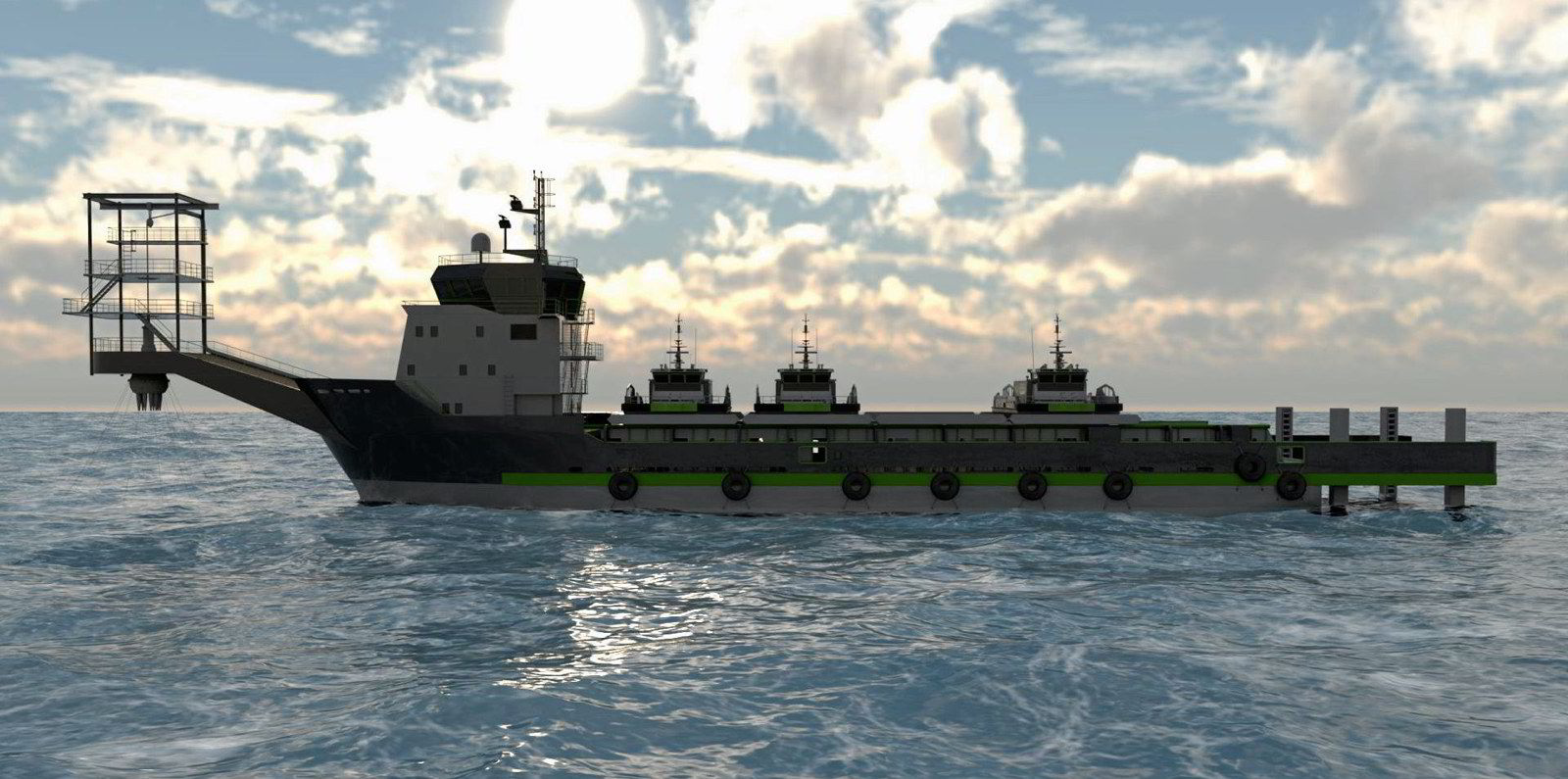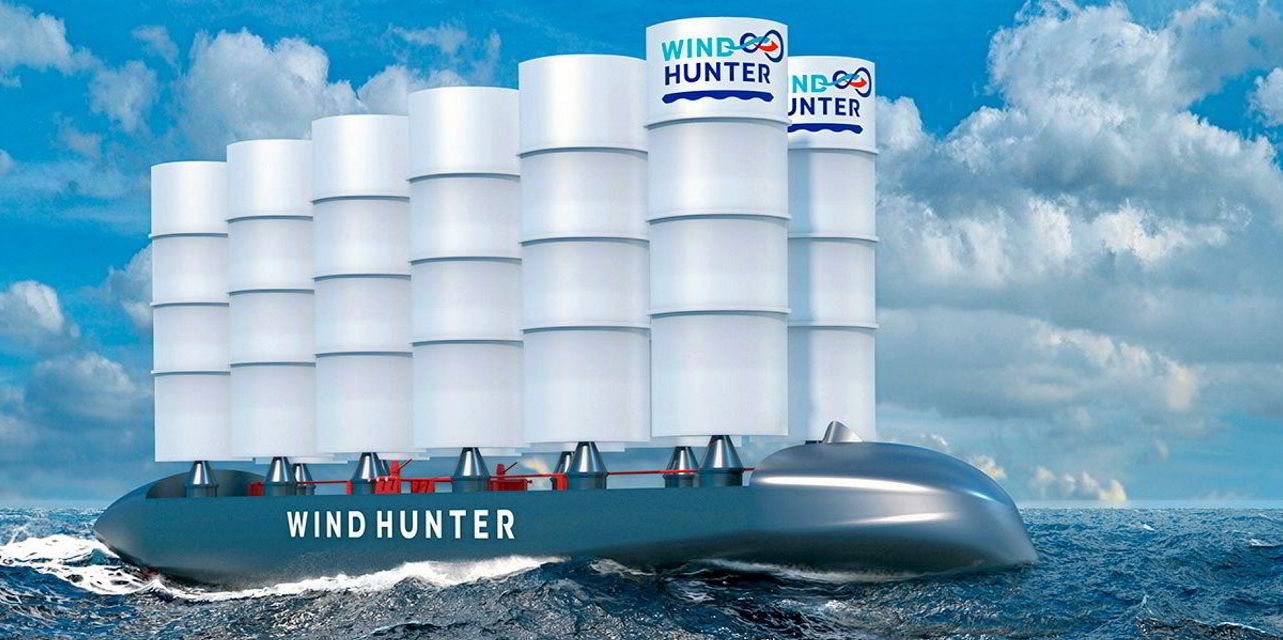If you want to work all day with an electric drill, you may want not one battery but two. That will allow you to swap a depleted battery to charge it while you continue working with a fully charged replacement.
The future of electric shipping may be no different, as technology firms pursue battery swapping for vessels.
That is the concept behind Shift Clean Energy’s PwrSwap system.

“What PwrSwap is, effectively, is very similar to the concept of a power tool that you have at home, where you can swap energy storage in and out of the power tool to enable you to keep working whenever the batteries are finished,” Shift Clean chief executive Brent Perry told the Green Seas podcast.
“We’ve taken that idea and scaled it up into much bigger applications.”
Perry, a former shipbuilder who now is focused on energy storage for maritime, and his Vancouver-based company are not alone in pursuing this idea.
In the Netherlands, Zero Emissions Services has developed an exchangeable battery pack that is the shape of a 20-foot shipping container. It has installed the system on a vessel that operates in the Dutch inland shipping market.
And in the US, FleetZero wants to build a fleet of vessels that use its swappable marine battery systems.
Singapore launch
Shift Clean’s flagship project involving PwrSwap is nearly ready for prime time in Singapore.
The company has been working with partners to build the first all-electric shortsea freighter for the Asian nation’s port.

The vessel is fully constructed and is scheduled for launch in June.
The company has also announced a preliminary deal with Japanese shipbuilder Mirai Ships to use the technology in the offshore wind sector, by building a ship that will charge smaller crew transfer vessels (CTVs) outfitted with PwrSwap batteries.
Unlike the electric drill, saving time spent waiting for batteries to charge is not the main driver behind the battery swapping in shipping.
Perry said fast charging a vessel battery can take as little as 10 minutes. But fast charging infrastructure is expensive, and it results in a far shorter lifespan for the battery.
“If I fast charge, and my battery’s going to last only a third of the time that it could, and then my cost of a kilowatt hour is significantly higher,” he said.
“If I can slow charge the batteries … then I can get much longer calendar life, and amortise the cost of electricity over many, many more cycles — literally, in our case, 15,000 cycles — which brings the cost typically down to about two cents a kilowatt hour.”
How PwrSwap works
The Hydromover will have six battery packs known as e-pods. The ship will start its day at the Port of Singapore with fully charged batteries, but when those batteries need recharging, on-board software will notify the operator when it is time to return to a PwrSwap station.
“We always carry inventory on shore so that we can make a transition for the customer very quickly, and let them get back out and do their jobs. So in the case of the Hydromover, a swap is going to take about 12 minutes in total to move all six of the pods on and off the vessel,” he said.
The batteries give the Hydromover a range of just 70 nautical miles (130 km), which fits the vessel’s operational profile within the port of Singapore and allows it to work for several hours per day with no greenhouse gas emissions.

Compare that to the estimated 1,600 shortsea freighters in Singapore that each burn about 800 litres of fuel per day. The costs of the PwrSwap system is about 40% of the cost of that fuel, Perry estimated. Shift Clean provides the systems on a pay-as-you-go basis.
The CTVs, which will be owned by Zephyrus Marine, will have the same setup, but offshore.
A service operation vessel (SOV) will act as a mothership and charging station in Japanese waters.
The smaller CTVs will shuttle personnel and supplies to and from offshore wind farms, and when they need a charge, they will dock with the mothership’s stern, where the battery swap will take three to 15 minutes.
The way to go?
But is battery swapping technology a viable pathway to tackle shipping’s greenhouse gas emissions?
Lucy Gilliam, a senior shipping policy officer at green group Seas at Risk, said it is an important piece of the puzzle, because it helps overcome challenges with charging infrastructure and grid compatibility at ports.
They also address a problem with synthetic fuels produced with renewable energy. E-fuels are seen as a key way to bring shipping to zero emissions, but some energy is lost in their production. Storing electrons in a battery averts those losses.
“We need to be putting more of a focus on electrification and finding all of the different innovations that can support electrification, because this is a much more efficient use of renewable energy,” Gilliam said.
One of the key challenges in battery technology in shipping today is the limited range of all-electric vessels.
But the technology has been advancing rapidly, and Gilliam thinks that will continue and batteries will play a bigger role in deepsea shipping in combination with other solutions.
“But electrification will be a key part of the system change, whether we’re also combining it with wind technology, or we’re combining it with synthetic fuels, it will be part of a system on board to be able to balance the energy on board,” she said.
Read more
- Beyond carbon: Shipping needs to update its language about greenhouse gas emissions
- Green Seas: ‘Age of Discovery’ meets modern tech as MOL pursues ship that makes its own fuel
- Start-up pencils deal for zero-carbon wind farm vessel hub at Japanese yard
- Cargill’s Eman Abdalla: ‘How can we achieve sustainability without having diversity?’
- Podcast: Cruise sector says ‘we need new fuels’ as carbon takes centre stage



